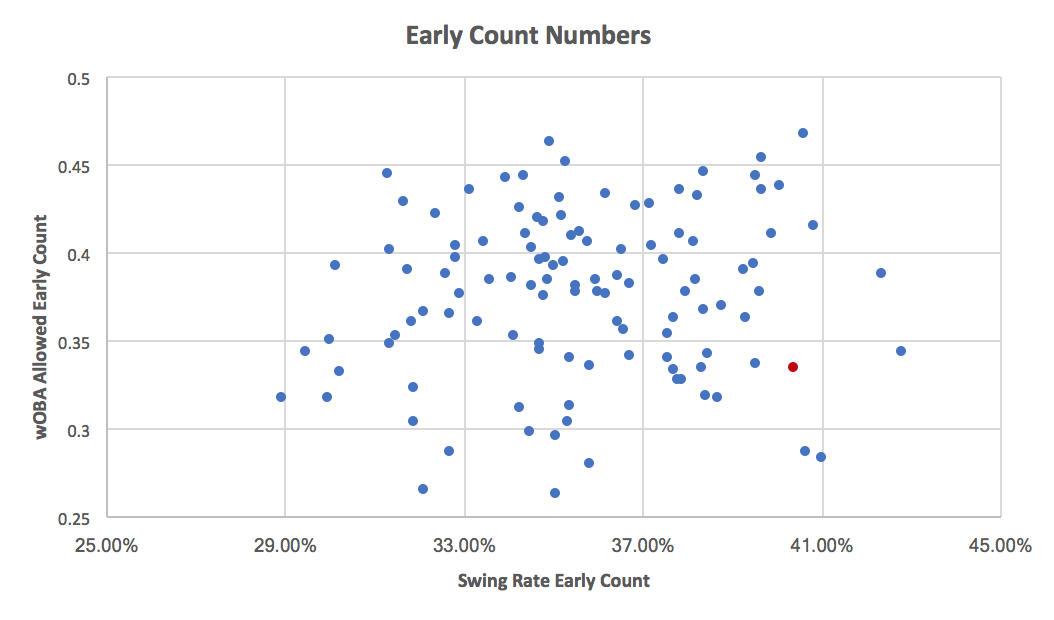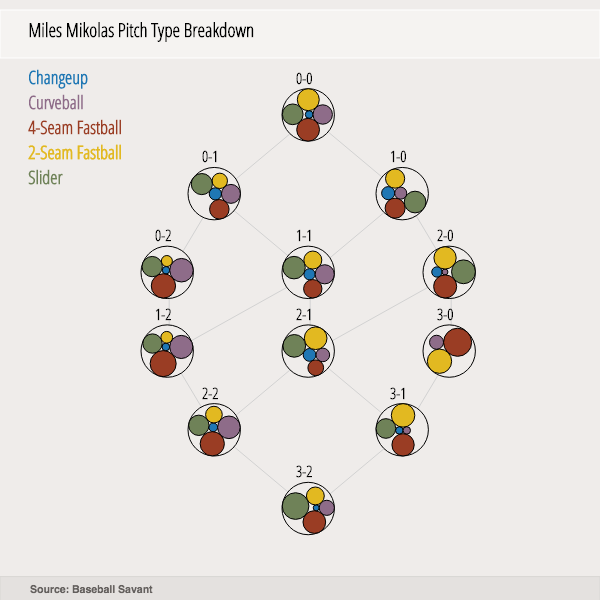(Photo by Dan Sanger/Icon Sportswire)
On Saturday, the St. Louis Cardinals beat the Milwaukee Brewers. It was not a particularly interesting game, although it did perhaps hold some more significance than most regular season games. The Cardinals won their tenth game out of the last eleven, which was their 14th win of August on only the month’s 18th day. They also passed the Brewers to move to second in the National League Central standings. In turn, they took place of the league’s second Wild Card slot. Milwaukee took that spot back on Sunday, but what occurred Saturday still marked significance in the league standings.
At the end of July, St. Louis held the ninth best record in the NL, the fourth best record in their own division, and sat 7.5 games back of the Brewers and Chicago Cubs. Making up that gap in two months is far from impossible, but after a June and July that saw the Cardinals go a combined 24-29, they were mostly an afterthought. They stormed their way back in just three weeks. The flip of the standings came on the back of an ace performance from the guy who has been just that for the Cardinals: Miles Mikolas.
Mikolas has been awesome, but that awesomeness has come with some skepticism. The 4.02 SIERA doesn’t like the 2.80 ERA. The .265 BABIP and 17.3% strikeout rate scream negative regression. Here we are, though, in late august, and Mikolas keeps contributing incredibly valuable innings. And how does he keep doing that? Because he always puts himself in a position for success.
Let me use his last start as an example. Mikolas went six innings, allowing one run, walking none, and striking out seven on Saturday. Mikolas faced 24 batters in the game. Through the first 14 batters, he threw a first pitch strike 12 times, good for an 85.7% rate. The league average for starters is 61.2%. He didn’t pitch into a single count with two more balls than strikes (2-0, 3-1). Mikolas wasn’t as exemplary over the next ten batters, but he still finished with a 66.7% first pitch strike rate and fell two balls behind only three times. He’s always in an advantageous situation. Mikolas doesn’t have the strikeout stuff, but it’s much easier to overcome that when every count favors you.
Let’s look at the top ten for the rate of pitches thrown while ahead in the count from starters. Basically how often a pitcher is in a favorable count. Along with that, let’s examine their strikeout rate and ERA:
| Pitcher | % Pitches Ahead |
K% | ERA |
|---|---|---|---|
| Chris Sale | 36.1% | 38.7% | 1.97 |
| Max Scherzer | 35.7% | 34.5% | 2.11 |
| Justin Verlander | 35.4% | 33.8% | 2.52 |
| Miles Mikolas | 35.2% | 17.3% | 2.80 |
| Aaron Nola | 34.6% | 25.4% | 2.24 |
| Jacob deGrom | 34.5% | 31.2% | 1.71 |
| Luis Severino | 34.3% | 28.0% | 3.28 |
| Marco Gonzales | 34.0% | 21.3% | 3.91 |
| Gerrit Cole | 33.3% | 34.9% | 2.71 |
| Clayton Kershaw | 33.2% | 24.8% | 2.47 |
If you were asked to pick the five best pitchers up to this point, there is a strong chance you would take one, two, three, five, and six on this list. Trevor Bauer is there too. But who is that number four, sandwiched between all those guys? Miles Mikolas, of course. Mikolas ranks among the bonafide aces.
This group posts some pretty hefty strikeout numbers. When sorting through the data, it’s evident that it’s not a necessity to have a large percentage of your pitches come from ahead in the count to generate strikeouts. Blake Snell, Kyle Gibson, Jack Flaherty and others with strong numbers appear on the opposite end of this number. But it’s also evident that having a larger percentage of your pitches come ahead in the account mostly links to solid strikeout numbers. Well, Mikolas ranks 85th in strikeout rate among starters. It doesn’t make much sense for him to be where he is in this metric.
However, there are other ways to earn strikes other than whiff-ability. Mikolas dominates in those categories. As I eluded to earlier, he is great at earning strikes on the first pitch. His 70.4% first pitch strike rate ranks second in the league behind Aaron Nola. His 47.9% zone rate is sixth in the league. Among Mikolas four primary pitches, his four-seam fastball and sinker have zone rates above 60% and his slider and curveball are both above 50%. His entire repertoire lends itself to staying ahead of his opponent.
The biggest factor, though, is that hitters don’t let Mikolas have the opportunity to get in poor counts. I plotted every starting pitcher’s early count swing rate (0-0, 0-1, 1-0) against their wOBA surrendered in those counts. Mikolas is in red:

Mikolas has one of the highest early count swing rates in the league and one of the lowest wOBA’s allowed in those situations. That sounds like a recipe for quick outs. He’s rarely getting deep into counts, which takes away the opportunity for both strikeouts and walks. Mikolas is among the lowest rates for both. He’s a balls in play machine. That’s not necessarily a good thing, but Mikolas has consistently avoided running into trouble. Let’s look at the pitch selection with which he gets these results:

The first pitch from Mikolas is a toss-up. He can throw either fastball or either breaking pitch. 0-1 and 1-0, the changeup is brought into play. So, Mikolas has all these pitches he can offer early in the count and they mostly live in the strike zone. Hitters are trying to jump on these early pitches in the strike zone, but Mikolas presents another problem to hitters. Aside from the four-seam fastball, all of his pitches have ground ball rates over 50%. Early ground balls makes for short at bats and short innings. Short innings makes for efficient pitching. Here he is on Saturday, inducing a poorly hit ball on a perfect first pitch slider from Lorenzo Cain:
[gfycat data_id=”MatureKnobbyKiskadee”]
Mikolas’ tendency to pound the zone brings one last beneficial factor – when he does leave the zone, hitters swing. Batters are expecting lots of pitches in the zone. This has caused plenty of chases out of the strike zone, as Mikolas ranks tenth among starters in chase rate. While the whiffs still aren’t there out of the strike zone, it’s pretty difficult to barrel up a pitch that isn’t in the zone.
The strikeout rate and BABIP provide plenty cause for concern with Mikolas. You shouldn’t expect him to be a 2.80 ERA pitcher. What you should expect, though, is a pitcher who works with extreme efficiency and pounds strikes. With great command of a variable repertoire, his ability to force poor swings is undeniable. His tendency to get ahead in counts and stay ahead puts strain on opposing hitters. As long as he continues to put himself in those favorable counts, there is no indication that Mikolas will regress rapidly.
